Raising Berkshire Pigs is a very rewarding experience. I believe the Berkshire breed is the best breed to raise due to the superior quality of meat and the quick grow out times. Our Berkshires are specifically bred for meat quality with the bloodlines including Black Diamond, Peter Lad, and Namatjira. When getting started with raising pigs you will have 4 main components to figure out. These components include feed, water, shelter, and fencing. This post includes links to farming products we use and trust on our farm. Check out our Recommended Products page for a compiled list of farming products.
Feed:
Starting with feed you will want to feed the pigs a formulated pig feed from a mill or in bags from a store. This will ensure they are getting the correct amount of protein, carbohydrates, and vitamins & minerals that are necessary for optimal growth. Pig feed will either come as pelleted or mesh. Either form of feed will work when raising feeder pigs. The next step regarding the feed is to decide if you want to hand feed or use a gravity feeder. Hand feeding is just carrying feed to them everyday and dumping it into a bowl or trough. The benefits from a gravity feeder include not having to carry feed to them every day and it allows the pigs to eat whenever they desire which leads to faster growth. The time difference for a butcher ready hog on gravity feeder vs hand feeding is around 7-8 months for gravity feeder and 8-9 months for hand feeding. It is important to get on the butchers schedule soon as possible to get your desired butcher date. So keep that in mind when you get the piglets and decide to use a gravity feeder or hand feed. The cons to a gravity feeder include a higher startup cost from purchasing or building a feeder. If you decide to build a feeder you will need to consider the weather impacts, durability from pigs messing with it, and limiting the pigs from knocking feed onto the ground which is wasted money. The weather impacts include keeping the feed dry from rain so it won’t get wet and moldy. Below is a example of a gravity feeder I built for roughly 250$. This gravity feeder features a barrel to hold roughly 300 lbs of feed, door flaps to keep the feed dry, and is on skids so it can be moved around easy when giving the pigs fresh ground.

Water:
It is important to give your pigs access to fresh water at all times. This can be done by a barrel and water nipple set up or a water trough. The barrel and nipple set up can be seen below. This system keeps the water clean due to the fact the pigs can’t get into the water like a traditional trough. It is very easy to train pigs to the water nipple even as piglets. When you get the piglets into their first pen, set up the barrel and have a small bowl underneath the nipple. Hit the nipple to let some water into the bowl and try and leave a water drip on the nipple. The piglets will go to the bowl for water and from curiosity or seeing the drip of water, they will bite the nipple. Once they hit the nipple they learn it provides water and will start drinking. The other piglets will learn from the first piglet that started to drink. It is best when raising feeder piglets to have a barrel that has 2 nipples. The barrel will hold 55 gallons which last a decent amount of time depending on how many pigs it is servicing and the time of year. It is important to buy a good quality nipple to prevent leakage. As you will see in the fencing diagram below, we position the water barrel in the corner of the fenced area. This will prevent pigs from rooting around the waterer and eventually causing it to fall over. The only benefit a water trough has over the barrel and nipple set up includes providing water during the winter time. The nipple does good until it gets in the lower 20s, then it will freeze. The nipple typically thaws pretty quick during the day after freezing overnight, so it still can be a wintertime option. The water trough is just easier to break the ice and add water when the temperatures are below freezing the entire day. During the summer time the water trough will be knocked around and the pigs will want to lay in the water to cool off which makes the barrel and nipple more efficient during those warmer months.
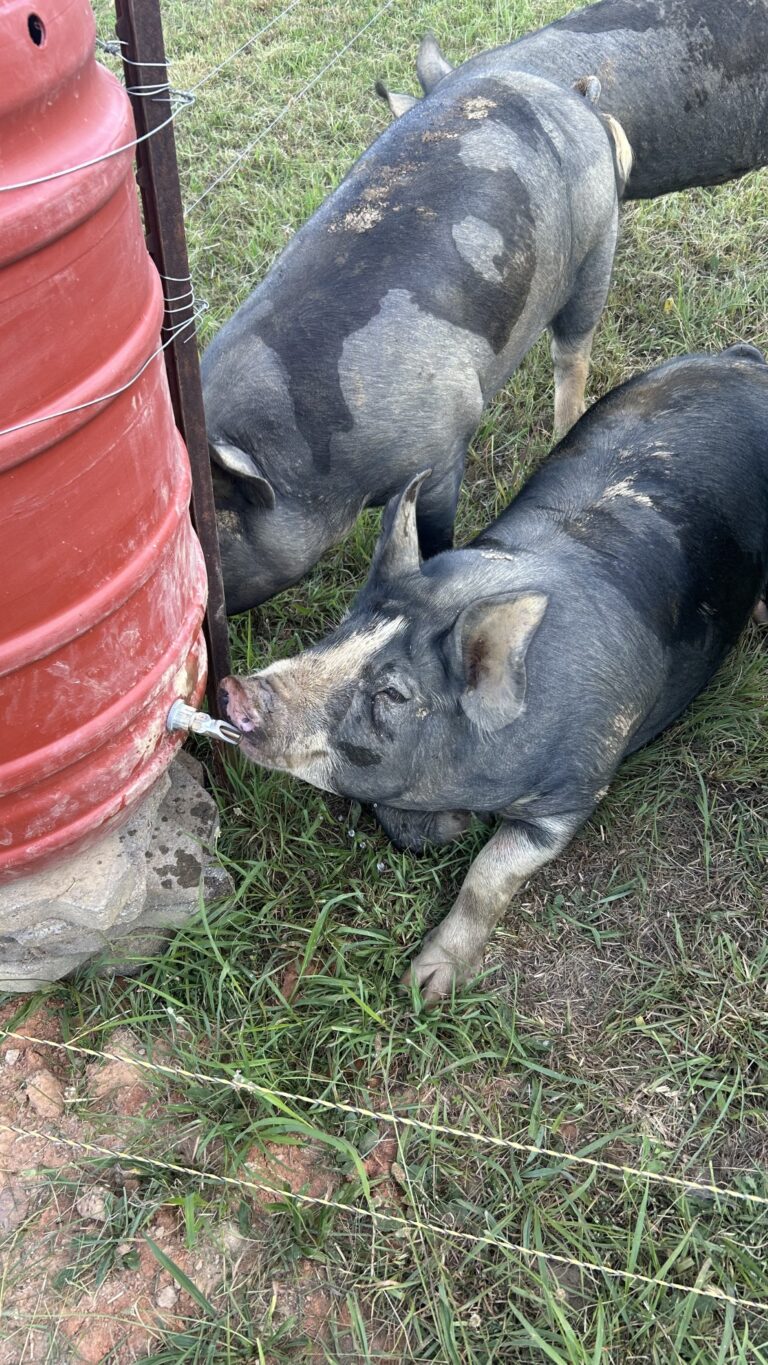
Shelter:
Building a good sturdy shelter will lead to happier pigs. The key components include a solid frame, waterproof roof, floor, and siding. The pigs like to rub up against stuff to scratch themselves and if you do not have a sturdy frame and siding they will break it. It is not enjoyable to come home to a pig hut that needs immediate repair! A floor is highly recommended and has been included into all of our pig huts. When we first started raising pigs I did not include a floor and it worked fine for a while. What happens is the pigs will root around inside there house to lay down. This creates a low inside the house. Then when a heavy rain comes, the roof will keep water from entering inside the house from above but it will not stop the water from draining inside and filling up the holes the pigs created. It is in your best interest to invest into good materials and build a house that will last good for years to come. Below you will see two different huts on our farm.
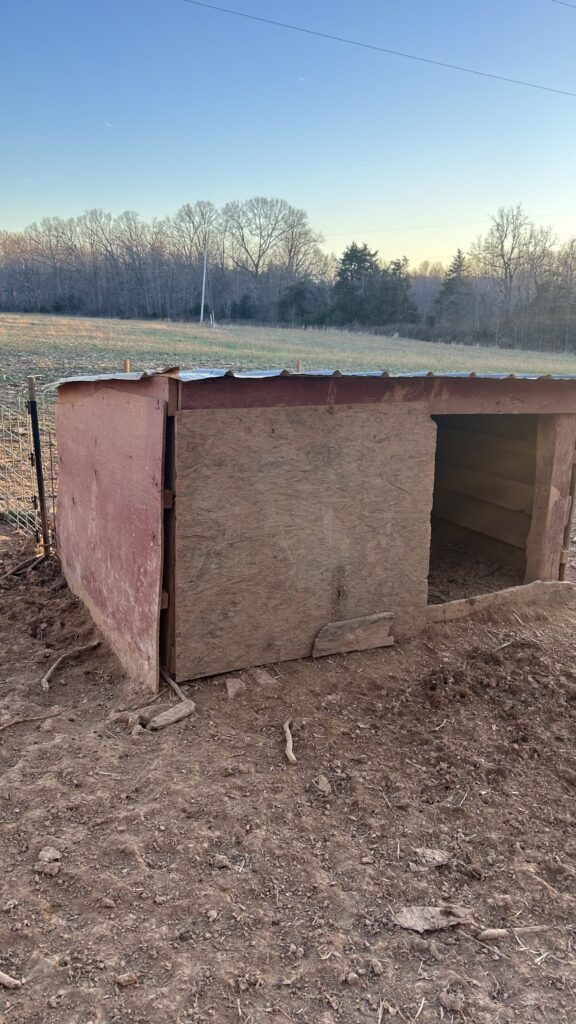
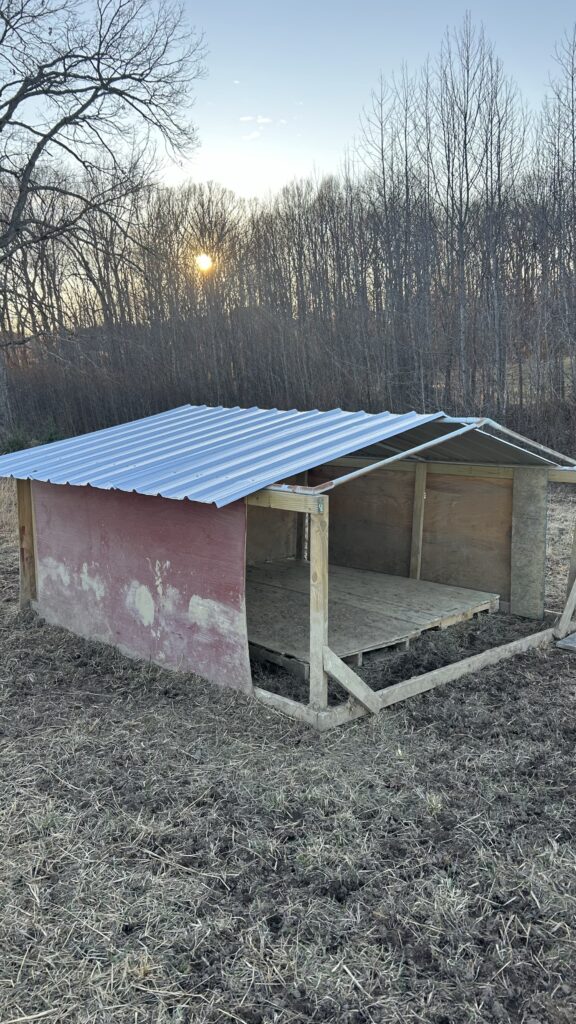
Fencing:
The final component to getting started raising pigs is building the fence. Pigs can either be raised in a small area with only hog panels or a larger area that includes electric fencing. I personally like to give my pigs access to fresh pasture or woods. To do this I set up my pen like you see in the pictures below. This style of fencing is easy to reroute and move, which allows for pigs to always have fresh ground. What you will notice is the small area that is a solid sturdy fence. This will first be used to train the piglets to the electric fencing. It provides a visual and unpassable barrier that keeps them in while they figure out the little wires shock them. Make sure to have the fence good and hot during this time. The electric fencing I use includes 2 stands of electric fence wire and fiberglass post. To provide shock to the fence you will need a energizer and a ground rod. If you do not get the piglets trained early they will cause a whole bunch of headaches later on. Once they learn they can cross it is pretty much impossible to retrain them. They will be in this area for about a 1.5 months. When trained properly they will respect the electric fencing on its own. Even then it is still important to have the solid fenced area as a backup if they do learn to escape. It also provides a place to keep them while adjusting the electric fencing. This example includes 2 gates to give easy access to each side of the training pen. A final note with the electric fencing is to know during the summer months the weeds and grass below the electric fencing will need to be maintained to keep the shock strong. It is good to routinely walk the line to make sure the pigs did not throw dirt or sticks onto the line which also will lessen the shock.
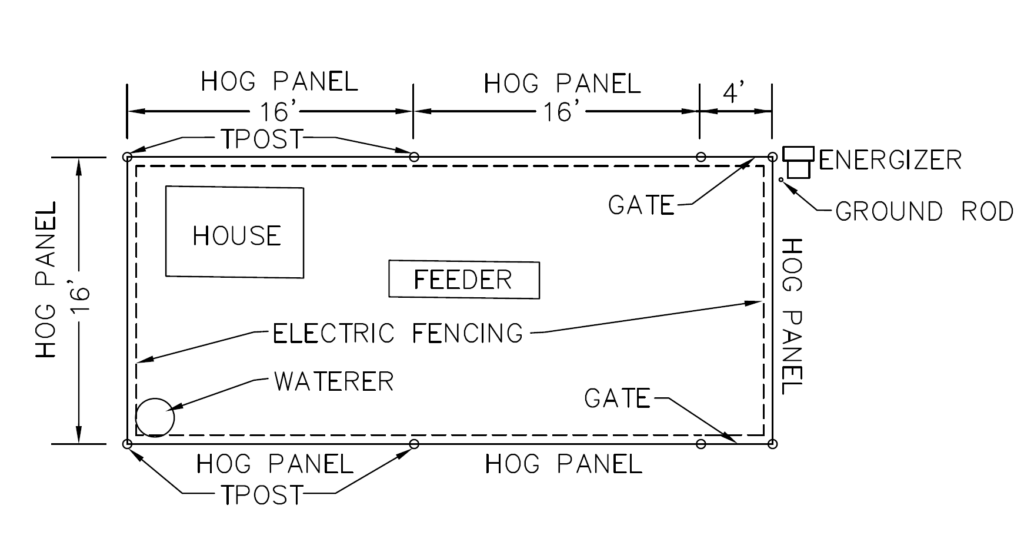
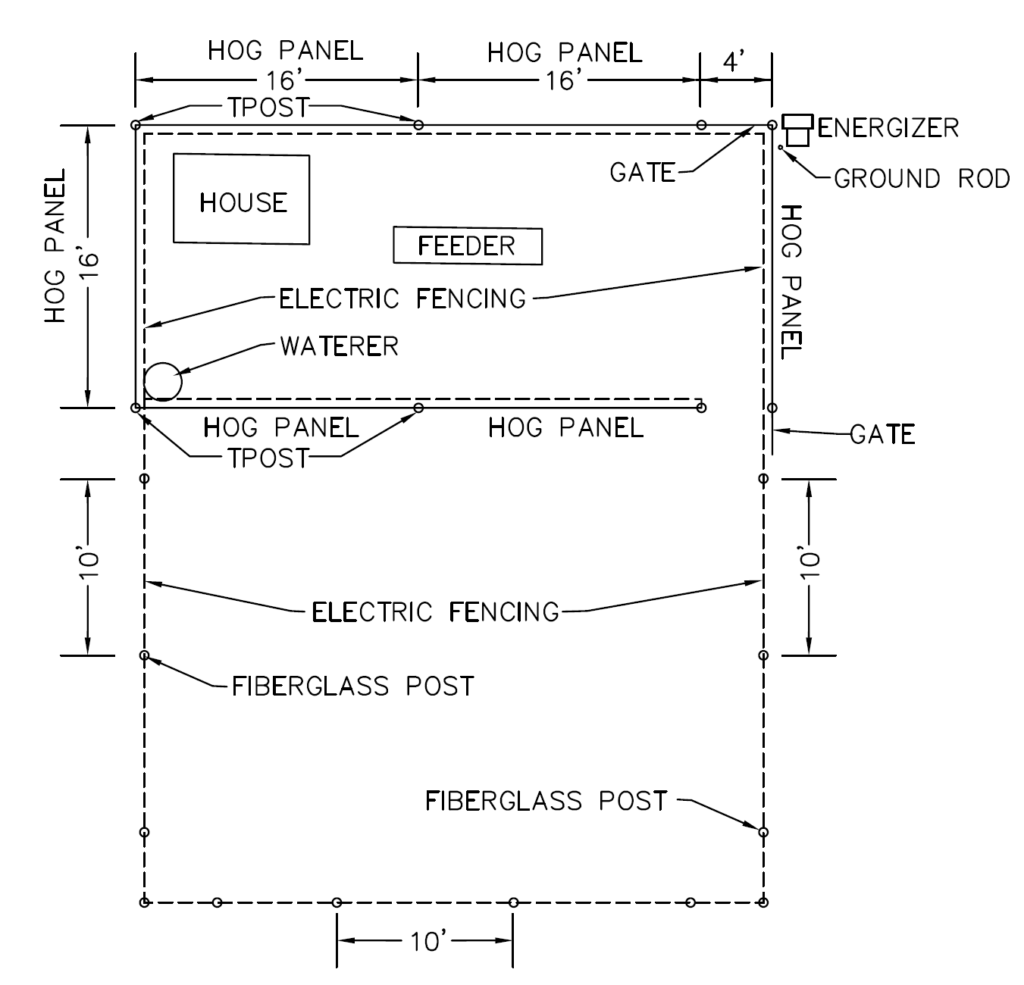
Disclaimer:
This blog post includes affiliate links. As an Amazon Associate, we will earn a small commission from qualifying sales at no extra cost to you.
